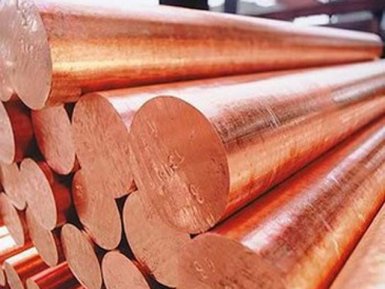Nitrided Structural Steel GOST

Are you interested in GOST for nitrided structural steels from the supplier company AvecGlob? Here you will find interesting information on this topic.
General information
Nitrided steels — doped, or with nitride-forming components in the composition — are predominantly low-carbon. Nitriding helps to increase their surface hardness. Such steels are used in applications where it is necessary to significantly increase the wear resistance of the surface.
The steels suitable for nitriding are chromium-molybdenum steels and steels, which contain aluminum. This element, when chemically treated with nitriding, gives a much higher surface hardness.
Of the elements forming aluminum nitride, chromium, vanadium and molybdenum, chromium and aluminum hardness are particularly affected. 1% aluminum results in a higher hardness increase than 3% chromium. This is because aluminum does not form carbides, and is therefore completely accessible for the formation of nitrides.
A lower content of molybdenum and vanadium increases resistance to tempering and reduces sensitivity to brittleness. A higher surface hardness, caused by additional elements of nitrided steels, results in a lower tendency of adhesion to the adjacent surface that is subject to wear. Accordingly, the resistance to abrasion is increased. Simultaneously, increased surface hardness results in a higher risk of cracking under mechanical stress.
There is no special standard for nitrided steels, and their belonging to this group can be determined by the presence of nitride-forming elements in its composition.
Factors affecting the nitriding process
Since the deformability of nitrided steel depends not only on the thin, solid nitride layer, but also on the chemical composition and structure of the base material, then for all nitrided steels the following is true: the more homogeneous and fine-grained the structure, the better the result of nitriding.
Supplier — AvekGlob company — offers at a reasonable price from the manufacturer a diverse assortment of nitrided structural steels that meet the technical requirements of domestic and foreign standards. The supplier guarantees the timely delivery of products to any address specified by the consumer.
Dynamics of nitride-containing layer formation
Nitrogen is transferred from the environment in the following ways:
Adsorption of nitrogen atoms on the surface of the component
Absorption of nitrogen atoms by the surface of component
Diffusion of nitrogen atoms along grain boundaries and inside grains
Nitrides form around certain points on the surface of the component. As the nitrogen concentration and nitriding time increase, nitrides grow deeper and expand across the grains to form a closed layer. Along with the nitride elements forming the alloy, the nitrides form and are dispersed into the submicroscopic regions in the metal matrix. It is almost inevitable that this layer exhibits a certain degree of porosity. This is due to recombination of molecular nitrogen in energetically suitable spots, such as grain boundaries, in the connective layer.
The composition of the nitride layers can be significantly modified by adapting the nitriding conditions and the systematic selection of materials.
The transition from the hardness of the diffusion zone to the hardness of the base material forms an intermediate zone, which, in contrast to the surface layers, reduces the risk of failure at mechanical stress. The nitride layers are also heat-resistant to 550 ° C. The change in the hardness of nitriding correlates with the thickness of the nitride layer. The higher the content of the nitride-forming component in the base material, the higher the surface hardness that can be achieved. Standardization of nitrided structural steels is not carried out, the main thing is the ability of steel to saturate the surface with nitrides.
The compressive residual stress in the nitrided surface layer also increases, resulting in increased fatigue strength. This, however, also reduces the depth of nitriding hardness that can be achieved, since alloying elements impair the diffusion of nitrogen into the interior of the component.
Properties of nitrided steels
High resistance to abrasion
High surface hardness
Lower coefficient of friction
Increased corrosion resistance
Increased heat resistance up to approximately 500 ° C
Increased fatigue strength
Good dimensional and shape accuracy.
Supplier — AvekGlob Company — offers to purchase various grades of structural nitrided steels that meet all technical standards and requirements. Products can be bought at a price formed on the basis of European and world standards of production. Implementation is possible in bulk and retail, for regular customers, a flexible system of discounts operates.


